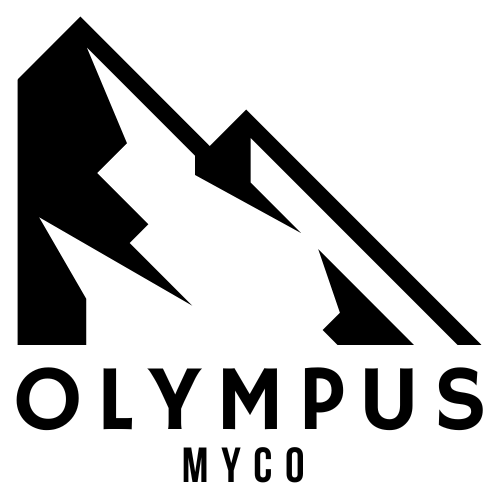Contamination is one of the most common challenges in mushroom cultivation, especially for beginners. Recognizing the signs of contamination and understanding how to prevent it are crucial for success in growing mushrooms. In this guide, we’ll cover the most common types of bacterial and mold contamination in mushroom farming, their symptoms, and preventive measures to help you maintain a healthy, thriving cultivation environment.
Common Bacteria and Mold Contamination in Mushroom Cultivation
If you've ever encountered a failed grow or wondered why your mycelium isn't colonizing as expected, contamination might be the culprit. Here, we'll highlight the most common types of bacterial and mold contamination, their symptoms, and how to tackle them effectively.
1. Bacterial Contamination in Mushroom Cultivation
Bacterial infections can hinder mycelium growth, sometimes without visible signs until the damage is done. Here are the most common bacterial contaminants in mushroom cultivation:
a. Bacillus spp. (Wet Spot or Sour Rot)
- Appearance: The grains or substrates affected by Bacillus spp. appear slimy, wet, or discolored. They often have an oily texture and may start to become mushy or soft.
- Smell: A foul, sour odor, often likened to rotting food.
- Cause: Bacillus contamination typically results from poor sterilization, excessive moisture, or improper handling of grains and substrates.
-
Prevention:
- Proper Sterilization: Sterilize grains and substrates thoroughly to kill any potential bacterial spores.
- Moisture Management: Ensure your substrate is hydrated correctly but not too wet. Excess moisture promotes bacterial growth.
- Clean Tools: Always use clean and dry tools when handling grains and substrates to avoid contaminating them with bacteria.
b. Pseudomonas spp.
- Appearance: Greasy or slimy patches often appear on grains or substrates, sometimes giving a wet or oily sheen.
- Smell: Mildly sour or acidic odor.
- Cause: This bacteria thrives in environments with high humidity and poor airflow.
-
Prevention:
- Control Humidity: Keep humidity levels balanced in your grow environment—too much moisture can encourage bacterial growth.
- Increase Air Exchange: Ensure there is adequate airflow in your grow space to discourage bacterial build-up.
2. Mold Contamination in Mushroom Cultivation
Molds are one of the most common contaminants in mushroom cultivation, and they can quickly overtake your grow setup if not dealt with properly. Here's a rundown of the most frequent mold contaminants:
a. Green Mold "Trich" (Trichoderma spp.)
- Appearance: Trichoderma starts as a white, cottony growth and gradually changes to a bright green color, usually around the edges of the substrate or grain. It can rapidly spread across the surface, and you might see thick, fuzzy patches of green mold in the most humid areas.
- Smell: Musty, damp odor, which is different from the earthy, pleasant smell of healthy mycelium.
- Cause: Trichoderma competes with mycelium for space and nutrients, often overtaking the substrate. It thrives in overly moist environments, poor sanitation, and unsterilized substrates.
-
Prevention:
- Sterilize Substrates: Ensure substrates are properly sterilized or pasteurized to kill mold spores before use.
- Clean Tools: Disinfect all tools and containers used in cultivation to prevent the introduction of mold.
- Control Moisture: Avoid over-saturating your substrate. Ensure it has the right moisture content to support mycelium growth without encouraging mold.
- Increase FAE (Fresh Air Exchange): Trichoderma thrives in stagnant air, so improving ventilation in your grow chamber will help reduce the risk of contamination.
b. Black Mold (Aspergillus niger)
- Appearance: Black spots or patches that start small but can quickly grow large and cover the substrate. The mold can look almost powdery or granular, with dark black or greenish hues.
- Smell: A musty odor, which is often strong and unpleasant.
- Cause: High humidity, poor ventilation, or contaminated air can promote the growth of Aspergillus.
-
Prevention:
- Increase Airflow: Ensure your grow area is well-ventilated and not overly humid. Using our Dual Filter Lightning Bags helps enhance Fresh Air Exchange (FAE) and maintain optimal airflow, reducing the risk of contamination.
- Disinfect Regularly: Clean your workspace and tools to eliminate spores and reduce the chances of contamination.
c. Blue-Green Mold (Penicillium spp.)
- Appearance: Penicillium mold appears as a blue-green color, often in clusters that spread across the surface of substrates. It can look powdery or fuzzy, and in some cases, may even have a bluish tint.
- Cause: Airborne spores or improperly sterilized substrates can lead to Penicillium contamination.
-
Prevention:
- Sterilize Substrates Thoroughly: Ensure your substrates and growing environment are properly sterilized to eliminate any spores.
- Maintain Cleanliness: Keep your grow space free of dust and other airborne contaminants by regularly cleaning surfaces and tools.
d. Cobweb Mold (Dactylium spp.)
- Appearance: Cobweb mold begins as fine, grayish strands that resemble the delicate threads of a spider’s web. The mold can spread quickly, covering large sections of your substrate in a matter of hours.
- Cause: Cobweb mold thrives in stagnant air and high humidity.
-
Prevention:
- Improve Air Exchange: Increase the airflow in your growing area to reduce humidity and prevent cobweb mold from taking hold.
- Lower Humidity: Reduce humidity slightly if cobweb mold appears, especially in the fruiting stage.
- Treat with Hydrogen Peroxide: If cobweb mold appears, you can spot treat it with a diluted 3% hydrogen peroxide solution to kill the mold without harming the mycelium.
e. Lipstick Mold (Sporendonema spp.)
- Appearance: This mold appears as a pinkish or reddish coloration, typically on the surface of substrates or grains. It may look fuzzy or almost gelatinous and often appears in patches.
- Cause: Excess moisture and poor air circulation are the main factors leading to lipstick mold.
-
Prevention:
- Moisture Control: Ensure your substrate isn’t too wet, and maintain proper air circulation.
- Hydration Balance: Avoid over-hydrating your grains or substrate during the preparation phase to prevent excess moisture.
How to Prevent Contamination in Mushroom Cultivation
The best way to minimize the risk of contamination is to create and maintain a clean, balanced environment. Here are some general tips to help prevent contamination during your mushroom cultivation process:
- Sterilize & Pasteurize Properly: Ensure that all substrates and grains are properly sterilized or pasteurized to kill off any harmful spores.
- Control Moisture Levels: Maintain the right level of moisture in your substrate—too little can cause poor colonization, while too much creates an ideal breeding ground for mold and bacteria.
- Clean Your Tools & Workspace: Regularly disinfect all tools, containers, and surfaces to ensure that contaminants are not introduced into your setup.
- Monitor Airflow: Proper ventilation is essential to prevent mold and anaerobic bacteria from thriving in a low-oxygen environment.
- Inspect Regularly: Regularly check your grow setup for early signs of contamination, such as unusual smells, colors, or textures. Early detection allows for more effective intervention.
By understanding the most common types of contamination and knowing how to spot them early, you can greatly improve your chances of a successful mushroom cultivation experience. With proper sterilization, moisture management, and ventilation, you'll create an optimal environment for mycelium growth and fruiting. Stay vigilant and proactive, and your mushroom grow will thrive!

